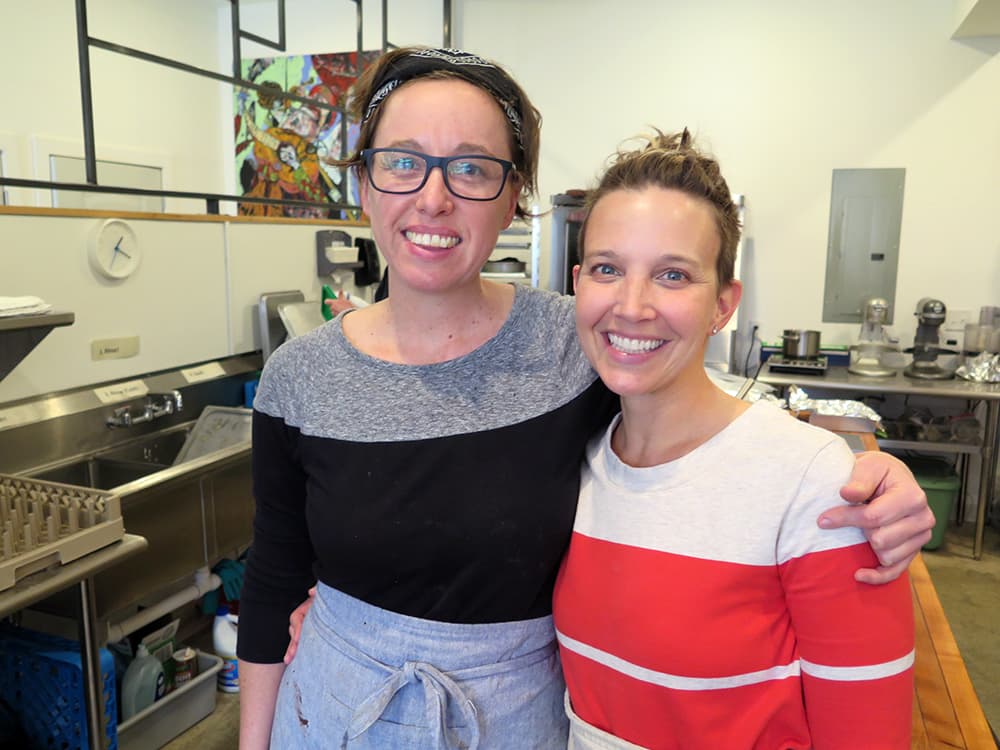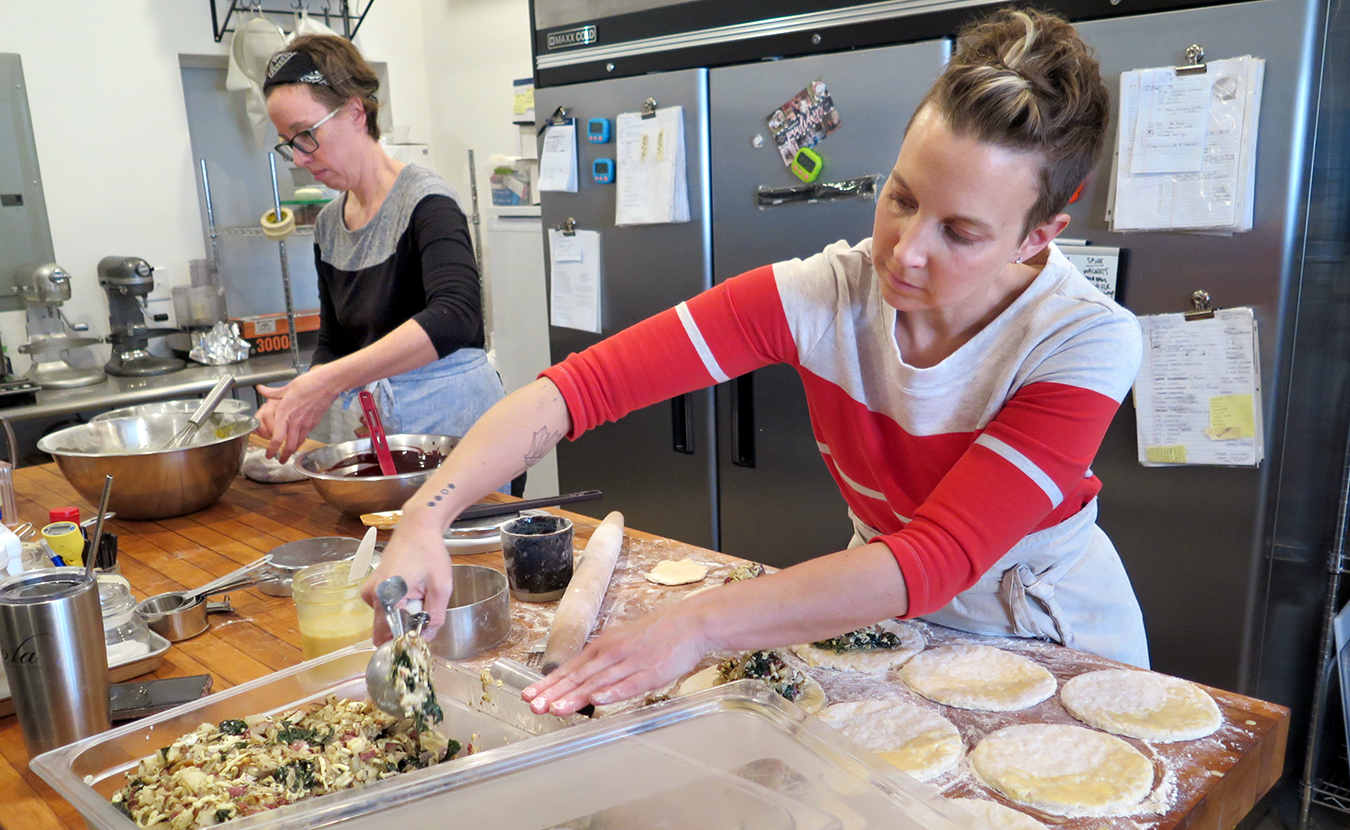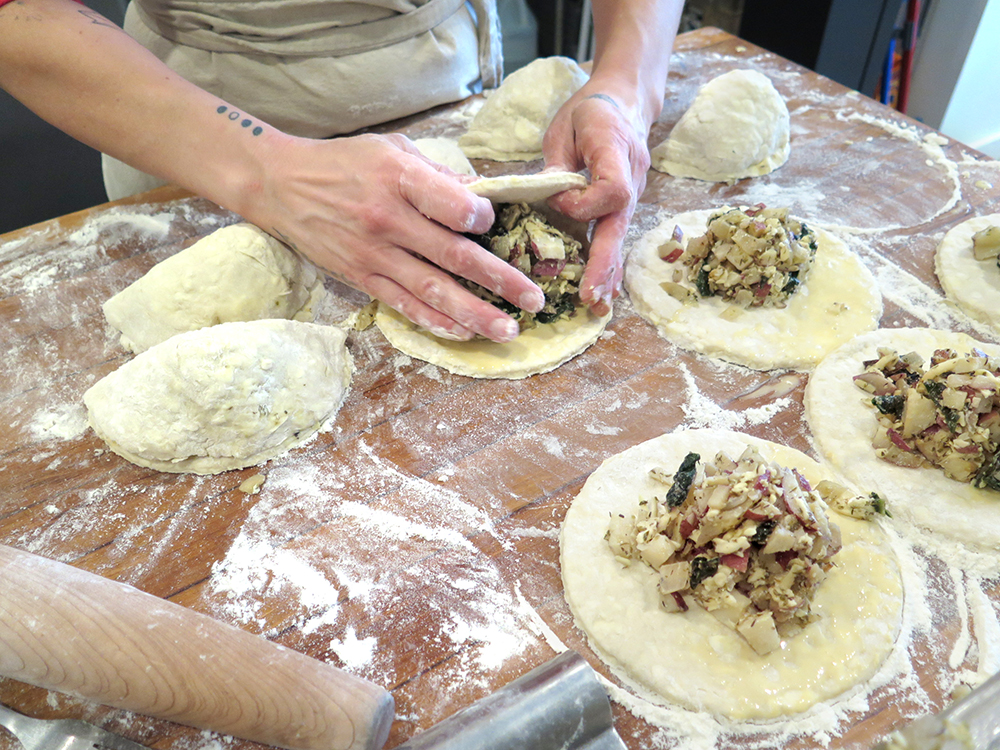You may have heard the phrase “intuitive eating” floating around as the concept picks up steam. But what is it and how is it different from what else is out there?
Intuitive eating is a practice of eating in a way that honors and respects your body’s hunger, fullness, and cravings, while allowing you to let go of diets (if you’re a dieter) once and for all. Intuitive Eating, a book and workbook by Elyse Resch and Evelyn Tribole, guides you through the ten core principles in great detail. The ten principles build upon each other and include rejecting the diet mentality, honoring your hunger, making peace with food, challenging the food police, respecting your fullness, discovering your satisfaction factor, honoring your feelings without using food, respecting your body, noticing how exercise makes you feel, and, finally, honoring your health. Let’s look at some of the fundamental pieces of listening to your body, including hunger, satisfaction, and fullness.

Two Sticks Bakery owners and bakers Kassie Jensen, left, and Amanda Armstrong practice intuitive eating principles in their approach to food. | Limestone Post
Intuitive eating is a very different approach from the diet and wellness culture we are immersed in. Most other nutrition, diet, and wellness recommendations come with a set of rigid rules that label and categorize food into do’s and don’ts, good and bad, healthy and unhealthy when it comes to what we eat. Intuitive eating takes the morality out of food and instead, with practice of these principles, begins questioning and turning away from unnecessary rules, trusting our body, and really listening to what it is saying.
For the most part, we are born intuitive eaters. In the early stages of life, we do not hesitate to let others know when we’re hungry or full through simple cues, and, if we dislike a food, we refuse it or event spit it out without hesitation. Some lucky individuals are encouraged to continue to listen to their body and foster a healthy relationship with food. However, for many, hunger and fullness are replaced by rules such as “clean your plate” at meals, “use smaller plates” for portion control, eat an apple when you crave a cookie, or eliminate foods you enjoy because of some other overly strict food rule.
So, if you are starting an intuitive eating journey, there are multiple questions to consider: Do you know what your hunger and fullness cues are? How do you react to them? Do you suppress them? Do you notice and respond accordingly? Do you acknowledge them at all? Do you consider what sounds good and what you’re craving? To dive more into this, I talked to some people who practice intuitive eating or some of the principles individually.
Anna Branam, owner, personal trainer, and certified yoga teacher at Urban Fitness Studio, says, “Tuning in to intuitive eating can be challenging — we are taught food rules early on (eat this, not that; eat then, not now, et cetera) — and learning how to tune in to one’s own needs can feel like a bit of an unlayering.”

Anna Branam, owner, personal trainer, and certified yoga teacher at Urban Fitness Studio, says, “Our bodies will tell us what we need if we take the time to tune in to ourselves and tune out the noise of diet culture.” | Courtesy photo
Branam continues: “I think it’s helpful to place hunger on a 1 to 10 scale: 1 being famished, about to pass out, and 10 being very full. I try to stay in the 4 to 7 range to keep my blood sugar from dropping and entering into a zone where I’m ‘hangry.’ Also a good practice if vulnerable to overeating! Stepping away from fear and choosing to, one, eat regularly, two, eat foods that satiate, and, three, eat quantities of food that will raise hunger levels to a 7 or 8 is the way I’ve found to both feel and operate optimally. I encourage others to connect with what their hunger level is and to eat accordingly. Our bodies will tell us what we need if we take the time to tune in to ourselves and tune out the noise of diet culture.”
Intuitive eating allows you to get back in touch with hunger and fullness cues. It encourages you to eat regular meals and snacks without hard-set rules about what to eat, when, and why. As you begin to practice intuitive eating, when our cues may not be as noticeable, it is often beneficial to eat meals and snacks every three to four hours — which generally looks like three meals a day with two to three snacks. As we start to tune in to our hunger, we also get to listen to what our body wants and needs and to respond with compassion and gentle nutrition: thinking about how our body feels, how we feel emotionally, and the experience we are having before, during, and after we eat a meal. Intuitive eating defines gentle nutrition as making food choices that honor your health and tastebuds while making you feel well. Studies have found that following intuitive eating can lead to a more “diversified, balanced and healthy diet,” also called diet quality.
One of my favorite places to honor my hunger in Bloomington — while also taking into consideration the satisfaction factor of intuitive eating — is Two Sticks Bakery. So I went there to talk with the owners and bakers themselves, Kassie Jensen and Amanda Armstrong (who have backgrounds in kinesiology and dietetics, respectively), about enjoying these satisfying and tasty foods from a place of intuition and body trust.

Jenson, left, and Armstrong — who are making peanut butter brownies and hand pies, respectively, in their bakery on South Washington Street — say that when they slow down and enjoy their food, they tend to feel more satisfied and sometimes eat less. | Limestone Post
Jensen, whose eyes light up with baking in a way they don’t with anything else, says, “It’s all about moderation. I don’t strive to be skinny but strong — to ride my bike and do activities that I enjoy.” When one eats intuitively, it can easily contribute to other aspects of our life, such as movement. With exercise, intuitive eating is all about noticing how exercise makes you feel — feel the difference and find joy in it.
Armstrong left clinical dietetics for foodservice after finding it difficult to follow the traditional model of dieting, where the focus seems to be on restriction and what not to eat. Reflecting on her own dieting experience, she says, “Whenever I was dieting, I found myself more deprived and never feeling full — always thinking about food.”
Armstrong shared, “We eat cake daily, but we eat veggies, too. If you allow yourself to enjoy the delicious things that you want, taking time to really enjoy what you are tasting by slowing down and being mindful about your food, it’s more satisfying. Sometimes we will only eat a few bites and save the rest for later or take it home to our family.”

Armstrong fills hand pies in the Two Sticks kitchen. | Limestone Post
Which is exactly what the satisfaction factor is all about. The authors of Intuitive Eating say that to find pleasure in eating you should go through a few steps when thinking about your food:
- Ask yourself what you want.
- Discover the pleasure of the plate by truly tasting and savoring your food.
- Make your eating experience more enjoyable by eating in a pleasant environment, taking time to slow down while appreciating the meal, and don’t wait until you’re over-hungry.
- Don’t settle — if you don’t like a food and there are other options available, you do not have to continue to eat it.
- Take time to check in. Does the food still taste good on the tenth bite? If not, are you still hungry?
Eventually, with the addition of gentle nutrition and honoring your health (the final principle, which means adding in a variety of foods with differing nutrients to offer in ways that you enjoy, including fruits, vegetables, grains, proteins, fats, and the fun foods, too), it is common that the obsession around food decreases, enjoyment of the meal and experience increases, and you may just find food freedom on the other side.
Intuitive eating is considered non-diet; however, it is not anti-nutrition therapy for medical conditions where such therapy would be beneficial and necessary. There is room for honoring your body and its cravings while respecting your health and taking into consideration medical nutrition therapy (an individualized nutrition plan based on relieving symptoms of chronic illness) in a way that makes you feel better. Intuitive eating could also be complicated if you suffer from an eating disorder, disordered eating, or a long dieting history. If any of these situations describe you and you’d like to work toward intuitive eating, consider working with a dietitian and therapist informed in intuitive eating.


